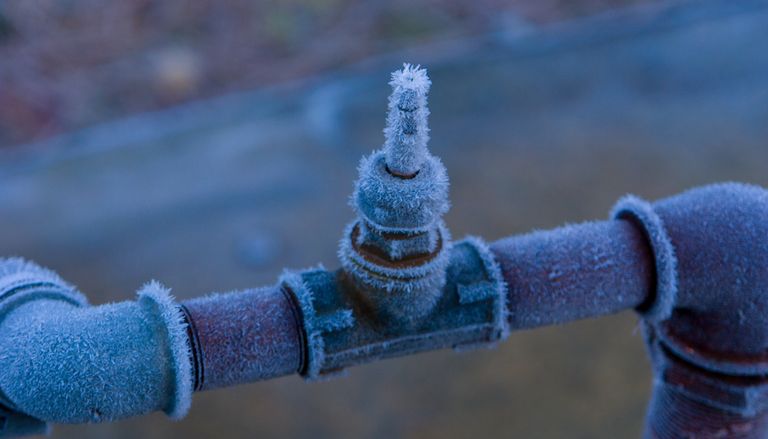Safeguarding Pipes from Cold Weather Issues: Key Tips
Safeguarding Pipes from Cold Weather Issues: Key Tips
Blog Article
The article below relating to How to prepare your home plumbing for winter weather is unquestionably fascinating. Don't miss out on it.

Cold weather can damage your plumbing, especially by freezing pipes. Below's just how to prevent it from taking place and what to do if it does.
Intro
As temperatures decline, the danger of frozen pipelines boosts, possibly causing expensive repair services and water damages. Recognizing just how to prevent icy pipelines is vital for home owners in cool climates.
Understanding Icy Pipes
What causes pipes to ice up?
Pipes ice up when subjected to temperature levels listed below 32 ° F (0 ° C) for prolonged periods. As water inside the pipelines freezes, it expands, putting pressure on the pipeline wall surfaces and potentially creating them to burst.
Threats and problems
Icy pipes can result in supply of water interruptions, building damage, and pricey repair work. Ruptured pipelines can flood homes and cause comprehensive structural damages.
Indicators of Frozen Water Lines
Recognizing frozen pipelines early can avoid them from breaking.
How to recognize frozen pipes
Search for reduced water circulation from taps, uncommon smells or noises from pipelines, and visible frost on revealed pipes.
Prevention Tips
Shielding susceptible pipes
Wrap pipelines in insulation sleeves or make use of warm tape to protect them from freezing temperatures. Concentrate on pipes in unheated or external locations of the home.
Heating methods
Maintain interior areas sufficiently heated up, especially areas with plumbing. Open closet doors to enable warm air to flow around pipes under sinks.
Safeguarding Outdoor Plumbing
Yard pipes and outdoor faucets
Separate and drain pipes garden hose pipes prior to winter. Install frost-proof faucets or cover exterior taps with protected caps.
What to Do If Your Pipelines Freeze
Immediate activities to take
If you think icy pipelines, maintain faucets open up to eliminate stress as the ice melts. Make use of a hairdryer or towels soaked in hot water to thaw pipelines gradually.
Long-Term Solutions
Architectural changes
Think about rerouting pipelines far from exterior walls or unheated locations. Add additional insulation to attics, basements, and crawl spaces.
Upgrading insulation
Buy top quality insulation for pipes, attic rooms, and wall surfaces. Proper insulation assists maintain consistent temperatures and minimizes the risk of frozen pipelines.
Conclusion
Avoiding icy pipes calls for aggressive actions and fast feedbacks. By understanding the reasons, indications, and safety nets, homeowners can shield their plumbing during winter.
5 Ways to Prevent Frozen Pipes
Drain Outdoor Faucets and Disconnect Hoses
First, close the shut-off valve that controls the flow of water in the pipe to your outdoor faucet. Then, head outside to disconnect and drain your hose and open the outdoor faucet to allow the water to completely drain out of the line. Turn off the faucet when done. Finally, head back to the shut-off valve and drain the remaining water inside the pipe into a bucket or container. Additionally, if you have a home irrigation system, you should consider hiring an expert to clear the system of water each year.
Insulate Pipes
One of the best and most cost-effective methods for preventing frozen water pipes is to wrap your pipes with insulation. This is especially important for areas in your home that aren’t exposed to heat, such as an attic. We suggest using foam sleeves, which can typically be found at your local hardware store.
Keep Heat Running at 65
Your pipes are located inside your walls, and the temperature there is much colder than the rest of the house. To prevent your pipes from freezing, The Insurance Information Institute suggests that you keep your home heated to at least 65 degrees, even when traveling. You may want to invest in smart devices that can keep an eye on the temperature in your home while you’re away.
Leave Water Dripping
Moving water — even a small trickle — can prevent ice from forming inside your pipes. When freezing temps are imminent, start a drip of water from all faucets that serve exposed pipes. Leaving a few faucets running will also help relieve pressure inside the pipes and help prevent a rupture if the water inside freezes.
Open Cupboard Doors
Warm your kitchen and bathroom pipes by opening cupboards and vanities. You should also leave your interior doors ajar to help warm air circulate evenly throughout your home.

We were brought to that report on How to Prevent Your Pipes From Freezing through a pal on our other web property. Make sure you set aside a second to distribute this entry if you enjoyed reading it. I am grateful for being here. Come back soon.
Browse Our Site Report this page